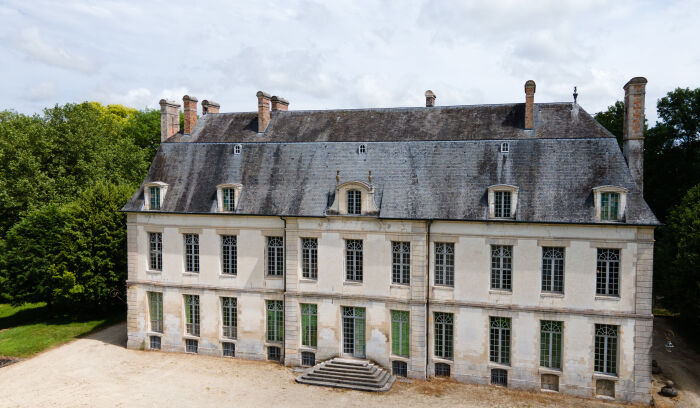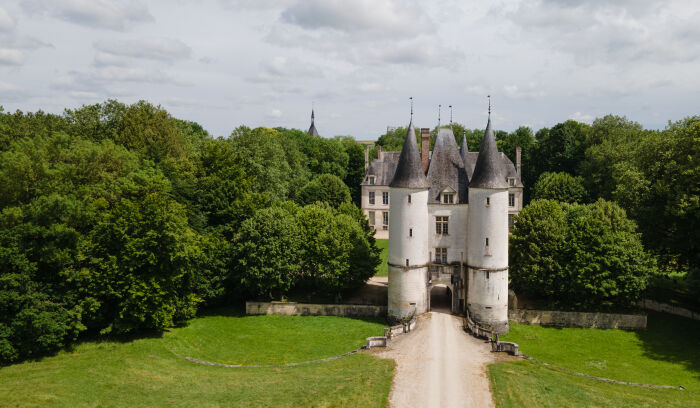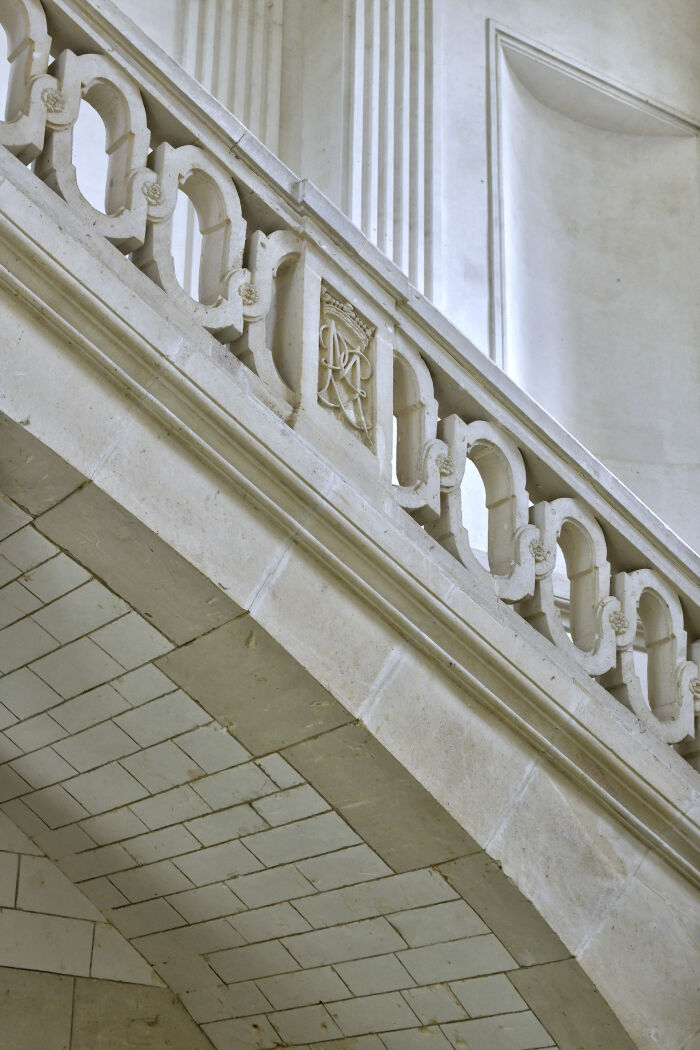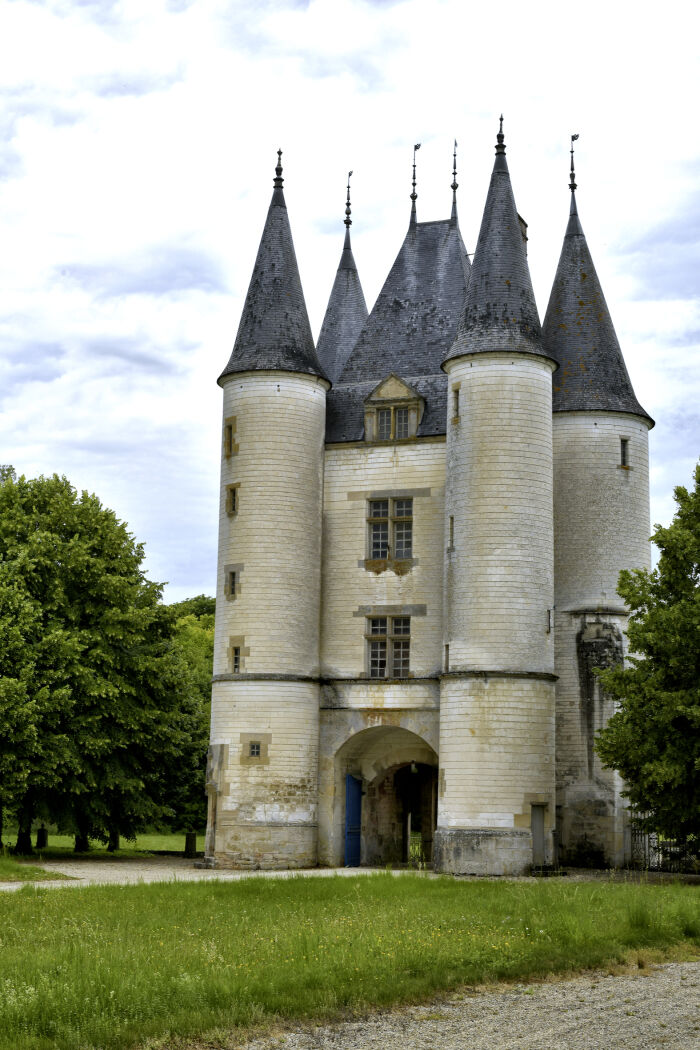Dampierre
| Address |
|---|
|
Château de Dampierre |
In the village of Dampierre, a few cubits from a monumental church, emerges, out of the white waters and the bocages, an impressive architectural ensemble, of such elegance that it seemed that it could only belong to the banks of the Loire. or the valleys of Ile-de-France. From these constructions, it still blocks today a wide esplanade lined with high forests, and sloping on the sides. It is entered through a monumental wrought iron gate from the School of Nancy, in the 18th century, in the style of that of the Town Hall of Troyes. In this vast space, more than a hundred meters from it, stands out, high towards the sky, a square tower, confined by 4 turrets with pepperbox or domed roofs. It has a very grand air and can be considered one of the most beautiful specimens of 15th century French fortification. Formerly preceded by a drawbridge under which flowed water from the ditches surrounding the feudal castle, today filled in and demolished, it was the entrance. It is crossed by a vaulted passage which accesses the main courtyard at the bottom of which stands out, over a length of 40 meters and a height of 28, a stone building with 2 floors pierced with 11 openings, including 3 on one barely projecting front, the whole topped with a Mansard roof with 3 dormer windows, the arch of which in the center, next to 2 flamed vases, alludes to the arms of the Picot de Dampierre family. The contact of these two architectures, one feudal and defensive, the other pleasant and welcoming, makes this area a privileged residence characteristic of an era without austerity whose majesty would have seemed even more powerful, if the formidable keep of the 12th century, demolished in 1810, still dominated it with its massive height. A land of invasion, this region has always been trodden by the footsteps of conquerors: the Romans established themselves there, Germanic bands established a foothold there, the Franks conquered it, feudalism made it a lordship of high rank whose custody the counts entrusted to the most valiant of their vassals. It was part of the castellany of Rosnay, and was itself the capital of a castellany on which 70 fiefs depended. It was owned by important people, lords of Saint-Dizier, viscounts of Troyes, constables of Champagne, from whom, through alliances of high lineage, came several kings, emperors and princes of France, Spain, Austria, Germany and England. Several dynasties succeeded one another. The founder of the first, that of Dampierre-Saint-Dizier, was, in 980, Hildevent. Through his marriage to Mahaud de Bourbon, his great-grandson Gui II gave birth to the Dampierre-Bourbon branch. On the death of his eldest son Archambaud, which occurred in 1219, a daughter of whom married Thibaud IV Count of Champagne, King of Navarre, it passed to his brother William II. In 1223, William took Margaret of Flanders as his wife, who inherited the earldom in 1244, when he had died. She died in 1280, leaving one of her sons, Gui III, as heir. With him began the Dampierre-Flandres dynasty. It was his granddaughter Philippine, wife of King Edward of England, who obtained from her husband the pardon of the bourgeois of Calais in 1347. The third son of Marguerite of Flanders, John I was Lord of Dampierre in 1250. In 1258, he left the castellany to his brother Jean II who kept it until 1307. It then fell to his daughter Marguerite, who since 1305 was the wife of Gaucher VI of Châtillon. With them began the Dampierre-Châtillon dynasty illustrated by Jacques 1st, Admiral of France, killed at the battle of Azincourt in 1415. It lasted until 1472 and disappeared with Valéran, whose eldest daughter had married Philippe 1st of Lannoy in 1469. , knight of the Golden Fleece and chamberlain of Charles V of Germany, who founded the Dampierre-Lannoy dynasty. The last male lord of this family, Peter II, died in 1522, leaving no children. He was buried in the church of Dampierre, of which his tomb is one of the most beautiful ornaments. His sister Jeanne, and her husband François d'Haraucourt sold it in 1526 to Louis Picot, lord of Pommeuse, 1st President at the Court of Aides of Paris. Thus ends the uninterrupted lineage of the holders of the lordship and ceases to flow in the veins of the new owner the blood of Champagne which, for 500 years, has vitalized the most illustrious families of France and Europe. Louis Picot introduced the Picot de Dampierre dynasty in the 16th century. Louis II had the title of baron. It was under his son Eustache, a man-at-arms, that around 1646 the barony was established as a marquisate: François Picot, cavalry campmaster, Jean-Auguste, sea captain, Pierre, brigadier of the king's armies, captain of the hunting and pleasures of the king passed this distinction down to the latter's son, Count Auguste-Henri-Marie, general of the armies of the Republic, who died for France in 1793. He had 3 boys and 1 girl. The marquisate passed to his son Charles, aide-de-camp of General Dessoles, under Napoleon I, his brother-in-law, peer of France, who had replaced him on the General Council, and who was gloriously killed, at the head of the Mobiles of the 'Aube, at the battle of Bagneux, in 1870. He had no children. The castle and property of Dampierre then entered the de la Rochefoucauld family by descent, through Louise Picot, daughter of the general of the Revolution, mother of the wife of Jules de la Rochefoucauld, Duke of Estissac. His son, Roger de la Rochefoucauld-Ségur, last Marquis of Dampierre, left it to his daughters, the Countesses of Kergolay and Amélie de Mérode, who sold it in 1907 to Viconte Beurret, a great collector of furniture and art. from the 18th century and who undertook considerable restoration and decoration work in Dampierre. The castle returned to its original family in the 1930s when a branch of the Picot de Dampierre family, the Alignys, bought the castle and kept it until 2021. The castle is open from July 1 to 30 and September 1 to 30, 2024 from Monday to Friday from 10 a.m. to 12 p.m. and from 2 p.m. to 6 p.m. as well as Saturday September 14 and Sunday September 15, 2024 from 10 a.m. to 12 p.m. and from 2 p.m. to 6 p.m.
Last updated on 13/03/2024 - Office de Tourisme du Nogentais et de la Vallée de la Seine
Quality standards


Information
Languages
| Reception |  |
Rates
| Adult | 10 € |
Périodes
| Monday | 10:00 - 12:00 | 14:00 - 18:00 |
| Tuesday | 10:00 - 12:00 | 14:00 - 18:00 |
| Wednesday | 10:00 - 12:00 | 14:00 - 18:00 |
| Thursday | 10:00 - 12:00 | 14:00 - 18:00 |
| Friday | 10:00 - 12:00 | 14:00 - 18:00 |







